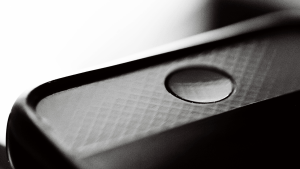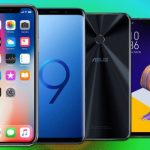Can Apple Make Us Forget About The iPhone’s Home Button?
The Home button on the bottom of the iPhone is as old as the iPhone itself, and has always been central to operating the device. On current phones it’s used for turning on the display, authentication, app navigation, activating mobile payments, talking to Siri, and returning to the home screen. Even when you’re not quite sure how to get to this function or that, a press on the Home button is at least a good start.
Now, like the headphone jack before it, the Home button is reportedly going away–at least on one of the phones Apple is expected to announce in September.
Apple, Bloomberg‘s Mark Gurman reports, will instead use a new software bar at the bottom of the screen of the forthcoming top-of-the-line iPhone (possibly called the iPhone 8) as the focal point of some new screen gestures to accomplish at least some of the classic Home button functions. Users may swipe up on the bar to open the phone. They might use some other gesture to view and switch among the apps they have open.
One of the core functions of the Home button, fingerprint sensing for authentication and security, probably can’t be handled in the new software bar. Apple will likely have to place the Touch ID sensor on the back of the phone, or, as rumors have suggested, do away with Touch ID altogether and rely on a facial recognition laser and sensor on the front of the phone to identify users.
Either way, the removal of Touch ID from the front of the iPhone represents a fundamental change to the way we’ll use the device. The fingerprint sensor is used not only to secure data on the phone itself but also to secure mobile payments via Apple Pay and in apps like Uber.
Will people who have used iPhones for years be able to get used to all this? It might not be easy for some. For a while at least, I will likely find myself absent-mindedly pressing on the bottom front of the new phone to wake it up or find an app I want.
A Trade-off
Apple may not have set out to get rid of the Home button. But its importance was overridden by the desire to cover almost the entire front of the new iPhone with an OLED display, allowing the company to put a screen similar in size to that of the iPhone 7 Plus (or even bigger) in the smaller form factor of the iPhone 7.
Apple, a trusted source told me, tried for months to place a Home button sensor beneath the OLED screen on the front of the new phone, but could find no reliable way of doing so. It also considered placing the Home button on the back of the phone, but–if Gurman is right–apparently settled on the new software bar at the bottom of the display.
As for Touch ID, it’s anybody’s guess how Apple plans to relocate those functions to some other part of the phone. Samsung also removed the Home button from its new Galaxy S8 phones, and, like Apple, tried to build the fingerprint reader underneath the display on the front of the phone, failed, and ended up placing the sensor on the back of the phone near the camera. This ended up being one of the few design flaws in the S8–placing one’s finger on the sensor high on the back of a large phone feels awkward, and it’s too easy to accidentally smudge the camera lens. Let’s hope Apple finds a better solution.
Design challenges often become opportunities. After a period of getting used to the absence of the Home button, we may begin to appreciate gesturing for Home button functions rather than pressing for them. And here’s hoping that any new optical facial recognition technology on the front of the phone will offer authentication that’s as secure and easy to use as TouchID.
Another consequence of the edge to edge display is the need for a small inlet hanging down at the top of the display to accommodate the front-facing camera and possibly some facial recognition sensors. The Bloomberg report says Apple has designed the user interface around this inlet, placing information like cellular reception, Wi-Fi signal, time, and battery life to the left and right of the camera and sensor tab.
Apple is expected to announce the no-home-button iPhone along with two other models at a press event later this month. The company will also reportedly announce a new Apple Watch with a cellular radio and a new Apple TV that supports 4K video.
Fast Company , Read Full Story
(35)













